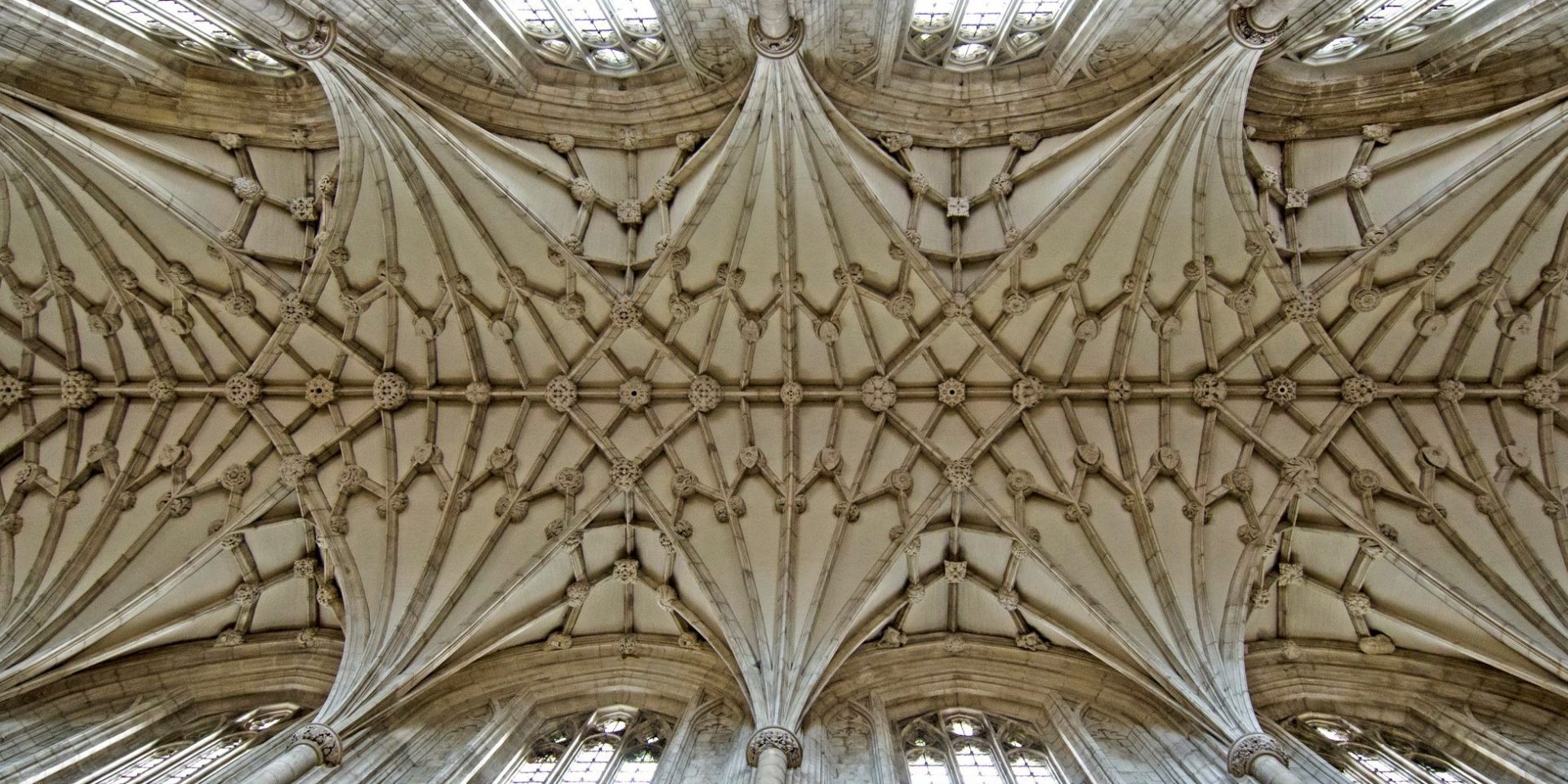Founded in 1079 and extensively remodelled over the next five centuries by successive bishops, Winchester Cathedral contains a rich array of architectural styles, from the massive vaults of the early Norman crypt to the ornate glories of the Renaissance chantry chapels and the 14th and 15th century perpendicular Gothic Nave.

Architecture
Architecture
The Cathedral's exterior
Seen from Winchester’s surrounding hills, the Cathedral remains the city’s most prominent landmark. Winchester Cathedral is one of the largest cathedrals in the UK, with the longest nave and greatest overall length of any Gothic cathedral in Europe.
The Chantry Chapels
The Cathedral is famous for its beautiful chantry chapels, where daily masses were said for the bishops who built them. A total of seven, all in different styles, were added between the 14th and 16th centuries. This is more than any other English cathedral, reflecting Winchester’s great power, wealth and royal connections.
The Venerable Chapel
The Venerable Chapel in the South Transept has a superb 14th-century entrance screen, once highly coloured and rich with statuary, and a beautiful honey-coloured altar in Jerusalem limestone installed in 2011.
Retrochoir
In the early 1200s, Bishop Godfrey de Lucy created a new retrochoir at the east end where pilgrims could congregate close to the shrine of the miracle-working St Swithun.
The Presbytery
In the early 1300s, Bishop Henry Woodcock created a new presbytery (where the altar stands at the heart of the building) to replace the original Norman Romanesque apse. The presbytery’s two great arches are supported on a magnificent feretory screen, one of the Cathedral’s gems and a masterpiece of the decorated style.
The Nave
The Nave was transformed at the expense of successive bishops in a magnificent example of architectural remodelling. The work was begun by Bishop Edington and continued by Bishop William of Wykeham. Wykeham’s architect, William Wynford, re-clad the original three-tiered Norman walls in the latest Perpendicular style. He completed the nave’s spectacular vault under Wykeham’s successor, Cardinal Beaufort.
The Crypt
This superb low-vaulted stone crypt, which floods in rainy months, dates from the 11th century, the earliest phase of building the Cathedral.

